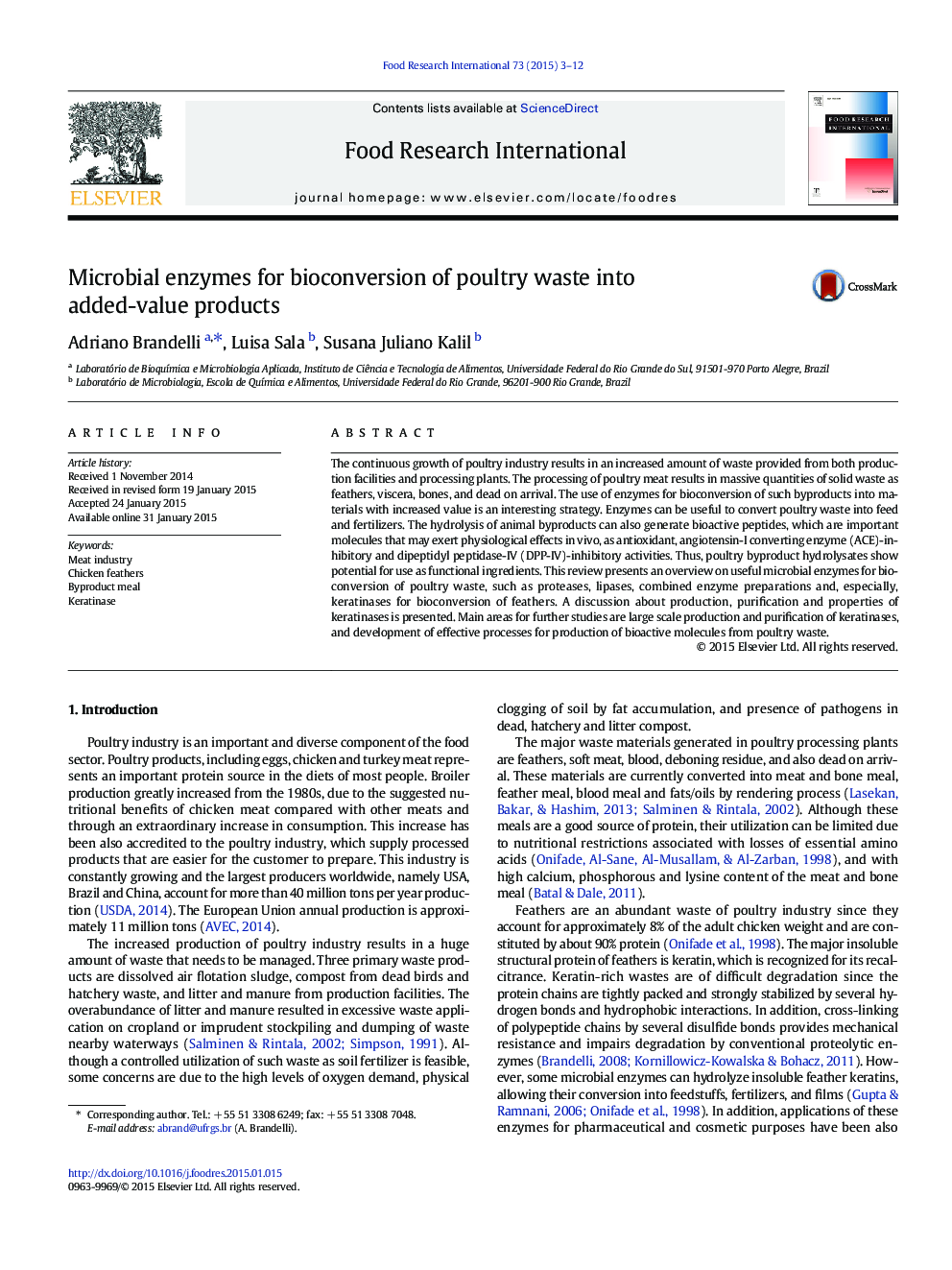| Article ID | Journal | Published Year | Pages | File Type |
|---|---|---|---|---|
| 6395421 | Food Research International | 2015 | 10 Pages |
â¢Poultry industry generates large amounts of waste.â¢Enzyme bioconversion is a feasible alternative to added-value to agroindustrial waste.â¢Poultry byproducts can be converted to feed and fertilizers.â¢Hydrolysates of poultry waste can be a source of bioactive peptides.â¢Production, purification and properties of microbial keratinases is discussed.
The continuous growth of poultry industry results in an increased amount of waste provided from both production facilities and processing plants. The processing of poultry meat results in massive quantities of solid waste as feathers, viscera, bones, and dead on arrival. The use of enzymes for bioconversion of such byproducts into materials with increased value is an interesting strategy. Enzymes can be useful to convert poultry waste into feed and fertilizers. The hydrolysis of animal byproducts can also generate bioactive peptides, which are important molecules that may exert physiological effects in vivo, as antioxidant, angiotensin-I converting enzyme (ACE)-inhibitory and dipeptidyl peptidase-IV (DPP-IV)-inhibitory activities. Thus, poultry byproduct hydrolysates show potential for use as functional ingredients. This review presents an overview on useful microbial enzymes for bioconversion of poultry waste, such as proteases, lipases, combined enzyme preparations and, especially, keratinases for bioconversion of feathers. A discussion about production, purification and properties of keratinases is presented. Main areas for further studies are large scale production and purification of keratinases, and development of effective processes for production of bioactive molecules from poultry waste.
